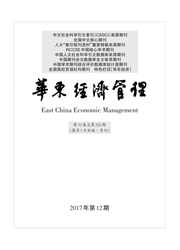

 中文摘要:
中文摘要:
住宅价格空间格局不论对于学界还是决策层来说都是一个重要课题。文章运用探索性空间分析方法,对华东地区2005-2011年间区域住宅价格空间格局及其时空演化进行了研究,得到了以下结论:总体上,华东地区房价水平区域之间的分异程度较高,空间相对与绝对差异都不断增长;华东地区住宅价格的空间相关性以长三角地区为核心,逐层衰减分布;同时,沿海地区的空间相关性往往高于内陆。住宅价格趋同现象较为显著的除了长三角地区之外,还有江西省、山东南部与安徽北部,但前者是高高聚集,后者是低低聚集;整个华东地区住宅价格的重心主要向长三角地区偏移。导致华东地区住宅价格变化的主要原因为居民收入水平、住房的供需、货币投放量。但其中供需机制与传统供需理论呈现反向作用趋势。
 英文摘要:
英文摘要:
The Spatial pattern of housing prices has always been a vital issue for both academia and decision-makers. The pa-per applies an exploratory spatial analysis method to study the regional spatial pattern and its spatial and temporal evolution of housing prices in east China during the year of 2005 to 2011. The results are as follows,on the whole,the extent of differentia-tion of housing prices among different regions in east China has been high while both relative and absolute gaps are still increas-ing. In addition, east China’ s spatial correlation of housing prices is attenuated layer by layer according to the geographical distance,and with Yangtze River Delta region as the core. Meanwhile,the spatial correlation in coastal area is usually higher than that in inland. The convergence phenomenon of housing prices is more significant in Yangtze River Delta region as well as Jiangxi Province,southern part of Shandong and northern part of Anhui. However,the former is high price convergence while the latter is low price convergence. The focus of the entire east China housing prices is mainly shifted to the Yangtze River Delta region. Leading to changes in house prices in east China are mainly due to income levels,housing supply and demand,money supply, among them, the mechanism of supply and demand and the traditional theory of supply and demand presents a trend of reverse effect.
 同期刊论文项目
同期刊论文项目
 同项目期刊论文
同项目期刊论文
 期刊信息
期刊信息
